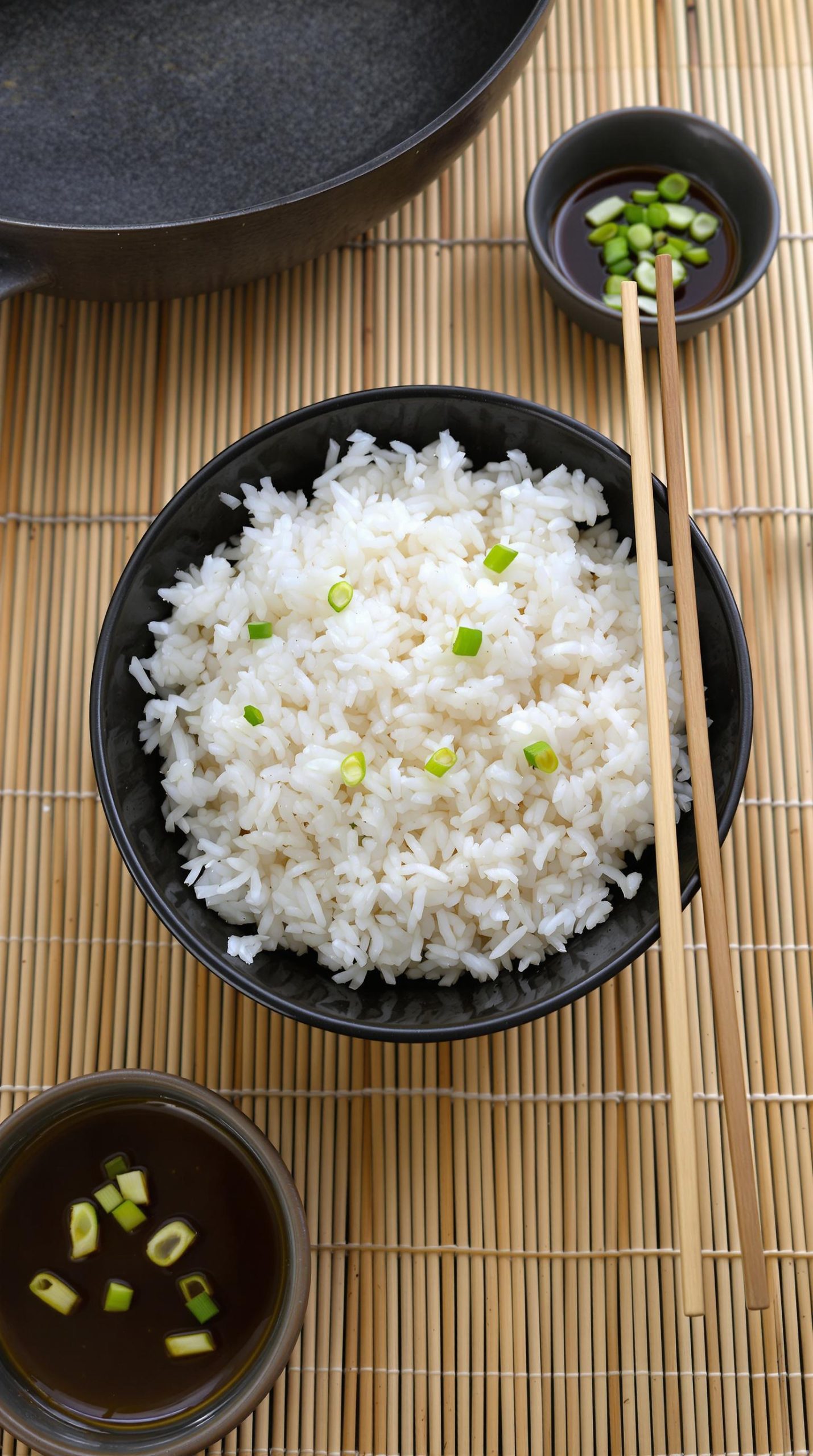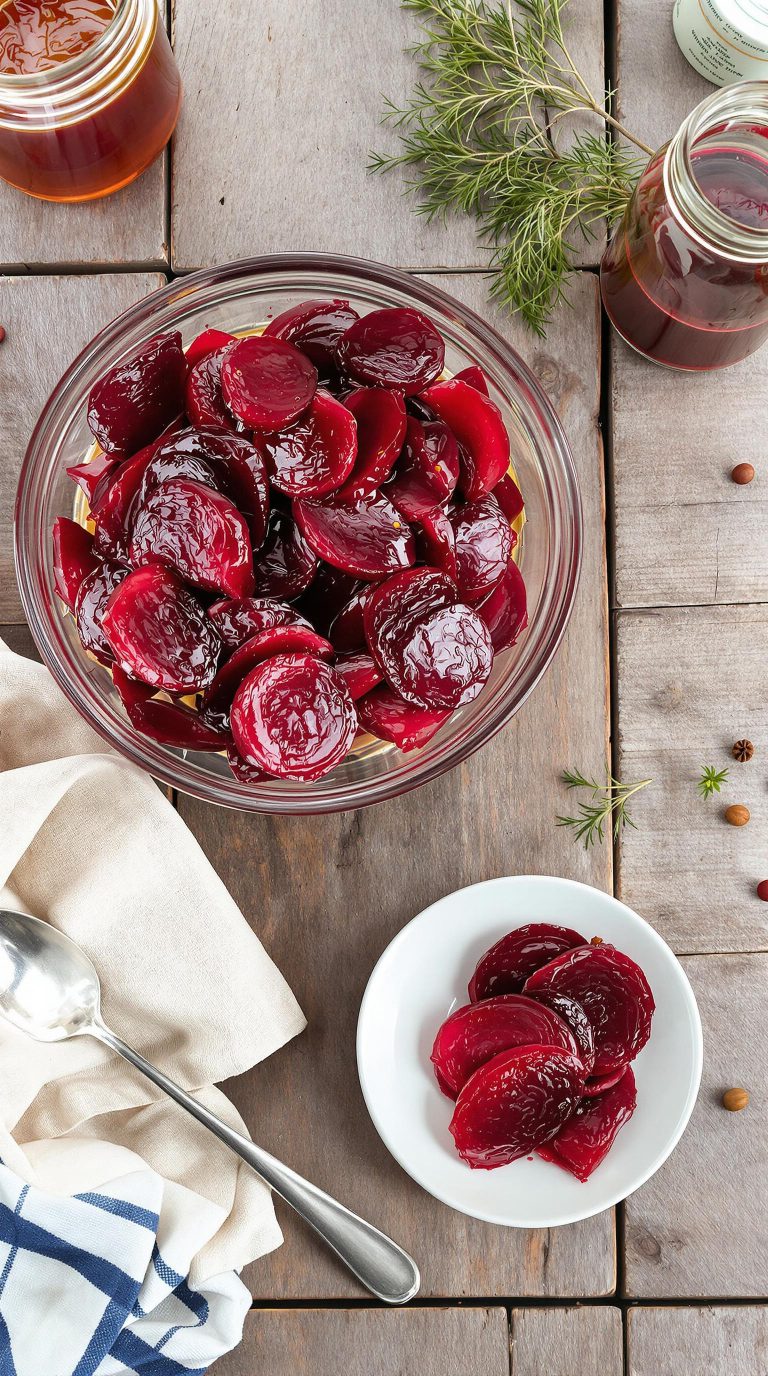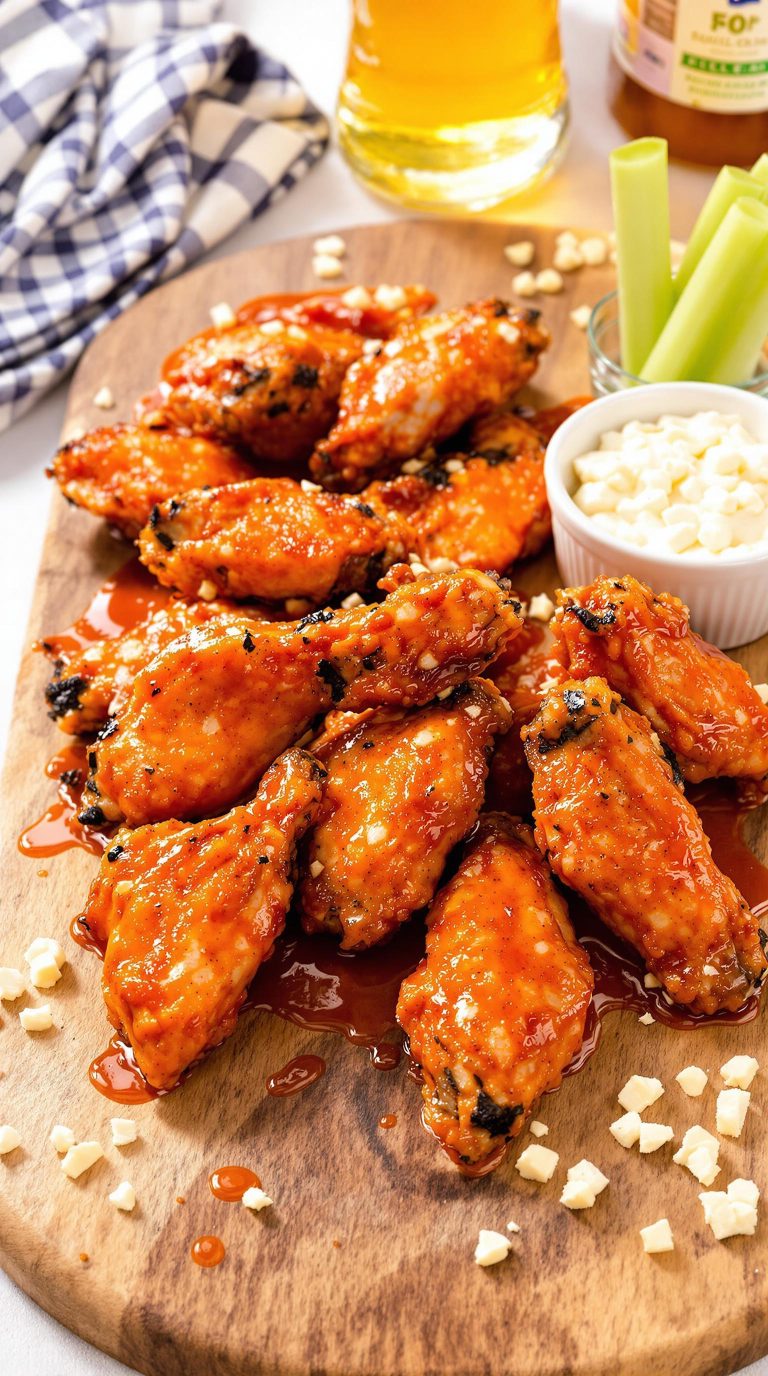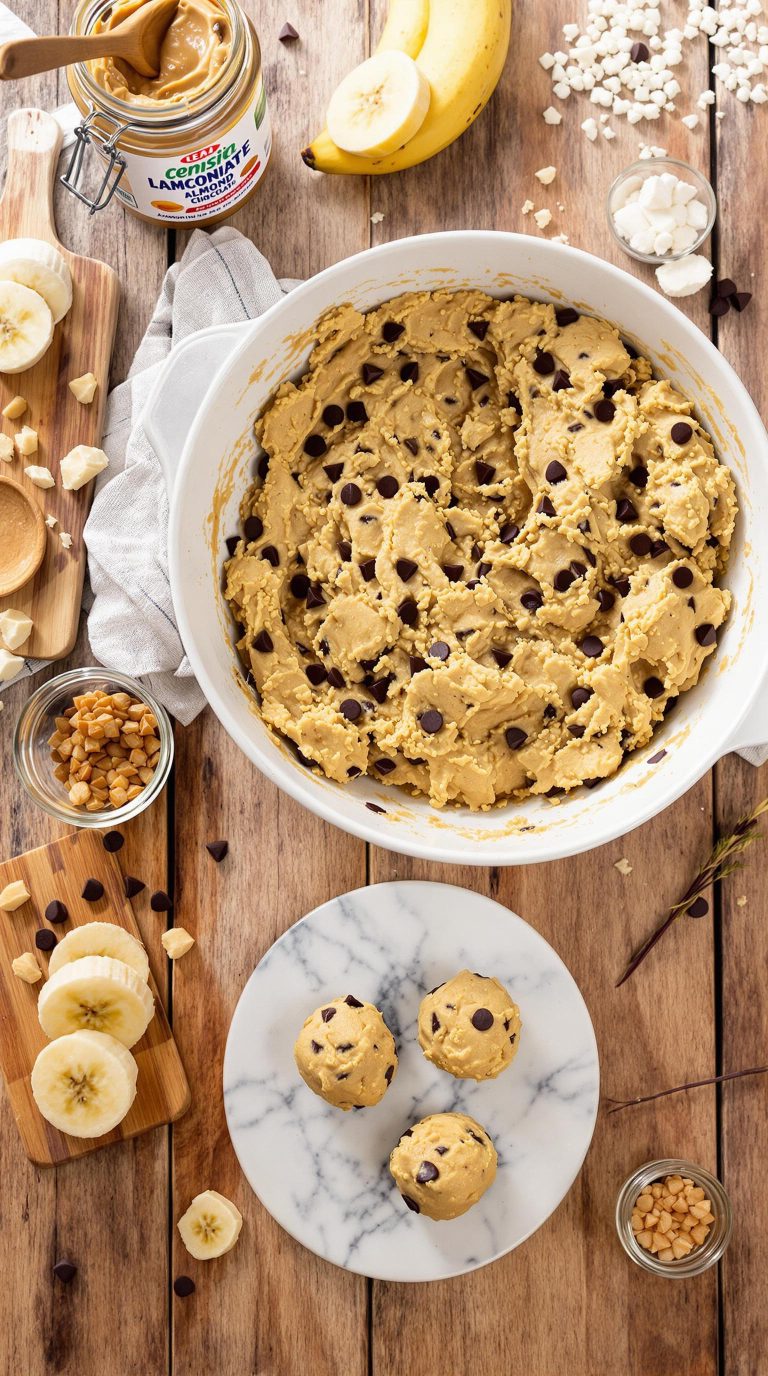Why You’ll Love this Perfect Asian Sticky Rice
There are three incredible reasons why this perfect Asian sticky rice will become your new kitchen staple.
First, it’s ridiculously versatile – pairing beautifully with stir-fries, curries, or simply enjoyed on its own with a drizzle of soy sauce.
Second, the texture is absolutely divine – each grain clings together in that perfect, chopstick-friendly consistency that makes eating such a pleasure.
Finally, can we talk about how foolproof this recipe is? Just remember my middle-finger water measurement trick, and you’ll nail it every time.
Who needs fancy rice cooker settings when you’ve got this traditional method down?
What Ingredients are in Perfect Asian Sticky Rice?
The beauty of this traditional Asian sticky rice recipe lies in its simplicity. You don’t need a pantry full of exotic ingredients or special equipment beyond a basic rice cooker. This is truly one of those recipes where less is more, allowing the natural qualities of the rice to shine through.
The starch content in the specific type of rice does all the heavy lifting to create that wonderfully sticky texture we crave in Asian cuisine.
- 2 cups short-grain rice (Calrose type works best)
- OR 2 cups medium-grain rice (Calrose type works best)
- Water (amount measured using the middle finger method)
When shopping for rice, the variety truly matters here. Don’t try to substitute long-grain rice like basmati or jasmine—they simply won’t deliver the sticky consistency we’re aiming for.
Calrose is specifically mentioned because its higher starch content creates that perfect clingy texture. And about that washing step? While cleaning the rice is essential to remove excess starch and any processing residues, remember the warning about over-washing.
Who knew rice could develop a fishy flavor from too much rinsing? It’s these little details that separate good sticky rice from truly great sticky rice.
How to Make this Perfect Asian Sticky Rice
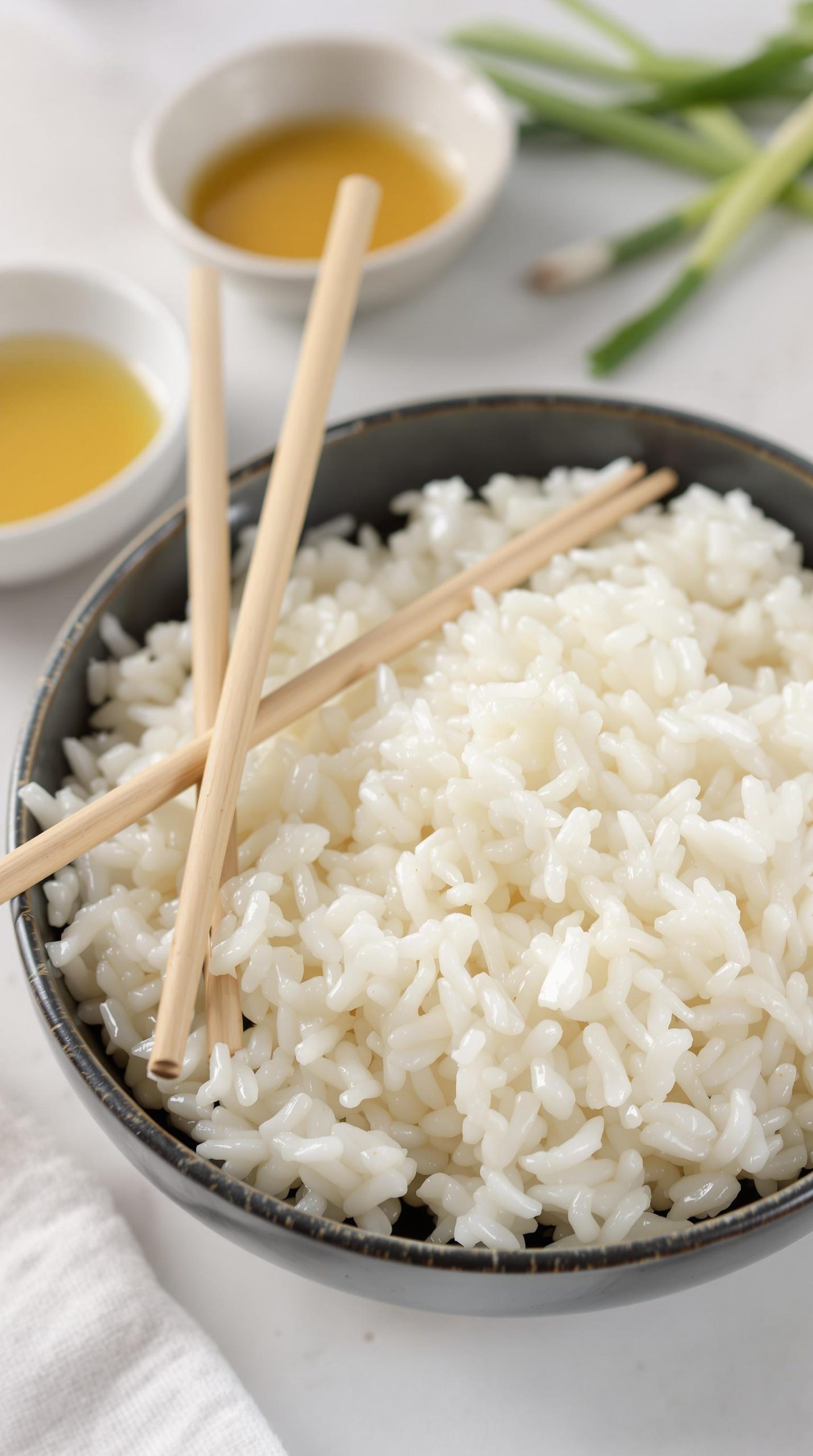
Making authentic sticky rice truly couldn’t be simpler, but like so many traditional recipes, it’s all about technique. Start by measuring 2 cups of short-grain or medium-grain Calrose rice into your rice cooker. The washing process is essential here—fill the pot with water and drain it three times, being careful not to let any rice escape during draining. This washing removes excess surface starch while preserving just enough to create that perfect sticky texture we’re after.
Remember, don’t go overboard with washing! Over-rinsed rice can develop a strange fishy flavor that will ruin your dish completely.
Now comes the traditional water measurement technique that generations of Asian home cooks have relied on. After your final rinse, add fresh water until it reaches the first line of your middle finger when you place your fingertip just touching the surface of the rice. No measuring cups needed!
This finger method might seem imprecise to those of us accustomed to exact measurements, but it’s remarkably reliable once you get the hang of it. Simply close your rice cooker and press start, allowing the machine to work its magic. Different cookers will signal doneness in their own way—either by automatically shutting off or switching to a warm setting.
The result should be perfectly sticky rice that clumps together easily but still maintains individual grain integrity. When you fluff it with a rice paddle or wooden spoon, you’ll notice how the grains cling together in delightful little clusters, ready to soak up sauces or complement your favorite Asian dishes.
This rice is versatile enough to serve as the foundation for countless meals, from classic stir-fries to sushi rolls, or even just as a simple side dish with a drizzle of sesame oil. The beauty is in its pure, clean flavor and that irresistible sticky texture that makes eating with chopsticks so much easier! For traditional stir-fries that complement sticky rice perfectly, a quality carbon steel wok distributes heat evenly and creates that authentic wok hei flavor.
While mastering rice is essential, many culinary enthusiasts find that investing in a premium pasta maker adds delightful variety to their homemade meal repertoire.
Perfect Asian Sticky Rice Substitutions and Variations
While traditional sticky rice relies on Calrose rice for that authentic texture, you’ll be pleased to know several substitutions can work in a pinch. Japanese sushi rice makes an excellent alternative, offering that same clingy consistency we all love.
In truth, any short or medium grain variety will do better than long grain options.
For exciting variations, I like to add coconut milk instead of some water for a tropical twist. A sprinkle of black sesame seeds or a drizzle of sesame oil transforms plain sticky rice into something special.
My favorite hack? Stirring in a tiny bit of rice vinegar and sugar for that perfect sushi rice flavor.
What to Serve with Perfect Asian Sticky Rice
Perfectly sticky rice deserves equally delicious companions that complement its uniquely chewy texture and mild flavor. I’m a firm believer that sticky rice pairs beautifully with stir-fried vegetables and proteins that have bold, savory sauces. Think teriyaki chicken, beef and broccoli, or a spicy mapo tofu.
Want something simpler? Try topping sticky rice with a fried egg and drizzle of soy sauce – breakfast of champions, really. For a complete meal, serve alongside crispy spring rolls or dumplings. The contrasting textures? Absolutely divine.
The rice also works wonderfully in sweeter applications when mixed with coconut milk and topped with fresh mango.
Final Thoughts
After mastering this sticky rice recipe, you’ll find it becomes a staple in your kitchen repertoire. There’s something magical about that perfect sticky texture that makes it an ideal canvas for so many Asian dishes. Remember, the finger-measuring technique might seem odd at first, but trust me, it works better than precise measurements.
Don’t stress if your first batch isn’t perfect—sticky rice has a learning curve. The key is finding the right balance with washing (not too much, not too little) and getting the water level just right. Much like when preparing flank steak for London Broil, patience and attention to detail reward you with superior results. This technique-focused approach applies to many comfort foods, including traditional hearty meatloaf that requires proper mixing of ingredients for the best texture. Your cooking adventures deserve this foundation!
